How Long Do Dogs Live? Average Dog Lifespans + The Longest Living Dog
Quick Guide
- How Long Do Dogs Live?
- What Are The Healthiest Dog Breeds?
- What Are The Longest Living Dog Breeds?
- #1: Chihuahua – (14-16 years)
- #2: Maltese – (12-15 years)
- #3: Papillon – (14-16 years)
- #4: Pomeranian – (12-16 years)
- #5: Lhasa Apso – (12-15 years)
- #6: Yorkshire Terriers – (11-15 years)
- #7: Shetland Sheepdog – (12-14 years)
- #8: Vizsla – (12-14 years)
- #9: Shih Tzu – (10-18 years)
- #10: Beagle – (10-15 years)
- What Are The Shortest Living Dog Breeds?
- #1: French Mastiff (a.k.a. Dogue de Bordeaux) – (5-8 years)
- #2: Irish Wolfhound – (6-8 years)
- #3: Leonberger – (7 years)
- #4: Neapolitan Mastiff – (7-9 years)
- #5: Great Dane – (7-10 years)
- #6: Bernese Mountain Dog – (7-10 years)
- #7: St. Bernard – (8-10 years)
- #8: Scottish Deerhound – (8-11 years)
- #9: Newfoundland – (9-10 years)
- #10: Rottweiler – (9-10 years)
- What Can I Do to Prolong My Dog’s Life?
- Who is the Oldest Dog Ever?
- Who is the Oldest Living Dog?
If you want to learn what dog has the longest lifespan, you have come to the right place.
We will take a look at the biggest factors to canine longevity including a peek at the lifespan of the most popular breeds. In addition, we will give you some tips to make sure you are doing what you can to help your dog live longer.
Of course, neither breed nor size can predict any dog’s age. Factors such as accident, disease, and lifestyle play major roles in determining longevity for our canine companions.
Still, if you want to know which breeds live the longest and are the healthiest, read on!
How Long Do Dogs Live?
What Dog Breeds Live the Longest?
One consistent predictor of average lifespan for canines is breed, the largest factor being breed size.
One of the largest studies on dog lifespan to date, Banfield Pet Hospital did a study that included data from 2.2 million dogs. The 2013 State of Pet Health Report includes a wealth of information about the lifespan of canines.
Here are some of the highlights:
- The average lifespan for dogs in 2012 was 11 years. This represents an increase by .5 years since 2002.
- Small breeds live an average of 41% longer than their giant breed cousins.
- Spayed females live an average of 23% longer and males gain 18% lifespan when neutered.
- Geographical factors such as rates of spay/neuter, prevalence of disease such as Lyme, and rates of heartworm infection have a major impact on canine lifespan.
- The states with the longest living dogs include Colorado, New Mexico, Oregon, Montana and South Dakota.
- States with the shortest lifespans on average include Massachusetts, Delaware, Louisiana, Alabama and Mississippi.
The data from the study also demonstrate a correlation between breed size and average lifespan, a strong longevity.
| Size | Examples of Breeds | Weight | Average Lifespan |
|---|---|---|---|
| Toy and Small Breeds | Chihuahua, Shih Tzu, Toy Poodles, Yorkies | Less than 20 lbs. | 11.3 years |
| Medium Sized Breeds | Pit Bull, Boxer, Beagle, Cocker Spaniel | 20-50 lbs. | 10.8 years |
| Large Breeds | Lab, Rottweiler, German Shepherd, Golden Retriever | 50-90 lbs. | 11.1 years |
| Giant Breeds | St. Bernard, Mastiff, Great Dane | More than 90 lbs. | 8 years |
One of the conclusions that is clear from the data is that the larger the dog, particularly the giant breeds, the faster the aging process.
Although the exact reasons are not fully understood, it is very likely that the higher metabolism rates of smaller canines can account for some of the reason that smaller dogs appear to live so much longer than their larger cousins.
Let’s take a closer look inside each of these categories to see the effect of specific breeds.
How Long Do Small Dogs Live?
Using data compiled by the American Kennel Club (AKC), we can take a closer look into the individual breeds and their average lifespan.
Taken as a whole, small dog breeds have an average lifespan of 10-15 years.
But that is a broad range. Let’s take a closer look at specific breeds:
| Toy and small breeds | Average Weight in lbs. | Average Lifespan in years |
|---|---|---|
| Pomeranian | 3-7 | 14-16 |
| Chihuahua | <6 | 14-16 |
| Yorkshire Terrier | 7 | 12-15 |
| Maltese | <7 | 12-15 |
| Shih Tzu | 9-16 | 10-18 |
| Boston Terrier | 12-25 | 11-13 |
| Pug | 14-18 | 13-15 |
| Dachshund | 16-32 standard, <11 miniature | 12-16 |
How Long Do Big Dogs Live?
Medium to large sized dog breeds have an average of 10-13 year lifespan, take as a whole.
| Medium and Large Breeds | Average Weight in lbs. | Average Lifespan in years |
|---|---|---|
| Border Collie | 30-55 | 12-15 |
| Siberian Husky | 35-60 | 12-14 |
| Basset Hound | 40-65 | 12-13 |
| Pitbull (American Staffie) | 40-75 | 12-16 |
| Dalmatian | 45-70 | 11-13 |
Giant breeds have the shortest average lifespan, coming in at 8-10 years.
| Giant Breeds | Average Weight in lbs. | Average Lifespan in years |
|---|---|---|
| Bullmastiff | 100-130 | 7-9 |
| Newfoundland | 100-150 | 9-10 |
| Great Dane | 110-175 | 7-10 |
| St. Bernard | 120-180 | 8-10 |
| Mastiff | 120-230 | 6-10 |
It is clear from the data that breed size does have an impact on overall lifespan. However, it is also clear when we look at individual breeds that other factors are clearly at play in the average lifespan of specific breeds.
One major factor, which we turn to next, are the congenital problems that are common to certain breeds which can have a significant impact on overall longevity.
What Are The Healthiest Dog Breeds?
“Healthiest” and “Longest Living” are not quite the same thing.
Since size has such a significant impact on longevity, even a relatively unhealthy small breed might have a longer average lifespan than a relatively healthy large breed of dog.
We still think it is relevant to our readers to know which dog breeds are the healthiest. In general, when looking by at pure bred dogs, there are two main classifications of health problems that can be breed specific:
Genetic Health Problems in Canines
First, congenital health problems include diseases with a genetic component that is common to the breed.
For example, let’s take a look at predisposition to cancer by breed:
| Breed | Cancer Related Deaths |
|---|---|
| Irish Water Spaniel | 55.8% |
| Rottweiler | 45.3% |
| Pitbull (Staffordshire Bull Terrier) | 44.4% |
| Golden Retriever | 38.8% |
| Boxer | 38.5% |
| Basset Hound | 31.0% |
| Cocker Spaniel | 29.4% |
| Welsh Corgi Pembroke | 28.4% |
| Doberman | 26.0% |
| Border Collie | 23.6% |
| Dalmatian | 19.1% |
| Lhasa Apso | 17.9% |
| Dachshund | 16.7% |
| Shih Tzu | 14.5% |
Cancer mortality rates vary greatly by breed. Some breeds have very high mortality rates from cancer, suggesting clear genetic tendencies to cancer. Note that there are many different kinds of cancer, and that genetic predisposition is usually focused on one or more clusters of cancer types unique to the different breeds.
It turns out that mixed breed dogs are indeed less likely to suffer from many common congenital health issues, lending some legitimacy to the idea that the mixed breed shelter dog you adopted may be healthier than an expensive purebred dog.
Structural Problems in Purebred Canines
Second on the list of major health concerns relative to specific breeds are structural issues that can be triggered by breeding to the standards of the breed, particularly when they go “too far.”
Unfortunately breeding to conform to visual breed standards can create specific recurring problems for some breeds.
There is a growing controversy about the ethics of deliberately breeding for a certain “look” when breeders know good and well that these same structural features are creating serious medical issues in their breed.
A recent example that made international headlines was the case of Cruaghaire Catoria, a German Shepherd who won the prestigious Crufts Best in Breed award in 2016.
When it was exposed that Cruaghaire Catoria, supposedly representing the best of this noble breed, could not even properly walk during the final parade round of the dog show, and that the footage had been suppressed, outrage erupted from all quarters.
The RSPCA, among other animal welfare groups, responded with official statements calling for more responsible breed standards that should place the health of breeding stock as the top priority.
It is important to keep in mind that the structural issues caused by the “sloped back” German Shepherd standard is not unique.
Several purebred dogs suffer from persistent problems as a result of breeding to confirmation standards that are about form over function, in some cases, sacrificing the longevity and overall health of the breed.
Examples include:
- Basset Hound: Excessively long ears are prone to infections and absurdly short legs cause a proclivity to debilitating elbow dysplasia.
- Boxers: The pressure to make “flat faced” boxers has led to many dogs that have trouble cooling off, making them prone to overheating with even moderate exercise in warm climates. In addition, like all flat faced breeds, they are at an increased risk of Brachycephalic Airway Syndrome, a potentially fatal condition that often requires surgery to fix.
- King Charles Spaniel: As many as 50% of this breed may have Syringomyelia, an extremely painful condition where the structure of the skull has been actively bred to a certain shape which is deformed to the point it can no longer contain the mass of the brain.
The Healthiest Dog Breeds
If you are interested in finding the “healthiest” dog breeds, consider looking at those breeds that are still bred to working standards, rather than physical confirmation to aesthetics that have nothing to do with the performance or soundness of the dog.
If you look at the those breeds that experiences the fewest health problems, you will notice that most of them are from the working or herding groups and are still actively bred by those intimately involved with actually working with these dogs day in and day out.
The healthiest dog breeds in terms of predisposition to genetic and structural problems include:
- Mixed breeds (due to less inbreeding and concentration of recessive congenital defects)
- Australian Cattle Dog
- Australian Shepherd
- Basenji
- Beagles
- Belgian Malinois
- Border Collie
- English Spring Spaniel
- Foxhound
- German Shorthaired Pointer
- Greyhounds
- Shiba Inu
- Siberian Husky
What Are The Longest Living Dog Breeds?
#1: Chihuahua – (14-16 years)
These tiny dogs are full of personality. They are also an ancient breed, dating back to the Mexican civilization of the Toltecs, prior to the Aztecs, in the 12th century.
#2: Maltese – (12-15 years)
Another ancient breed whose ancestors predate the rise of Greece, the Maltese is a graceful companion dog that has been a favorite among the royalty of many different cultures since.
#3: Papillon – (14-16 years)
These spritely lap dogs are easy to recognize from their distinctive ears which is also how they got their name! Papillon also happens to mean “butterfly” in French. Playful and athletic, these tiny dogs make for a charming and long-lived companion.
#4: Pomeranian – (12-16 years)
The Pom is a popular toy breed that is intelligent, if sometimes a little bossy. It is the smallest member of the Spitz family of breeds, with historical roots in northeastern Europe, specifically, Pomerania.
#5: Lhasa Apso – (12-15 years)
If a more distinguished and respectable small dog is what you are looking for, the Lhasa Apso is a prime candidate. Of course, make sure you have a brush, a good set of clippers, and plenty of time on your hands for this high maintenance pooch.
#6: Yorkshire Terriers – (11-15 years)
These long-lived dogs have a bouncy personality full of spit and fire. Although much more common today as small companion dogs, the Yorkie was originally bred as a ratter for miners and farmers during the 1800’s.
#7: Shetland Sheepdog – (12-14 years)
If a more distinguished and respectable small dog is what you are looking for, the Lhasa Apso is a prime candidate. Of course, make sure you have a brush, a good set of clippers, and plenty of time on your hands for this high maintenance pooch.
#8: Vizsla – (12-14 years)
If you are looking for a medium sized dog that also enjoys a long life, consider the Vizsla. They remain extremely popular for use as hunting dogs in Hungary and in the United States. They require a great deal of exercise and training to be balanced family pets.
#9: Shih Tzu – (10-18 years)
These adorable small dogs are popular in urban areas because they have low exercise requirements and thrive with apartment living. They are known to be very affectionate, and unlike many small breeds, tolerate small children well.
#10: Beagle – (10-15 years)
Due in part to their small stature and in part to their popular use as active hunting dogs, the beagle is a very healthy breed. They make good family dogs for folks that are active and have plenty of securely fenced property for games to keep this smart and athletic canine busy.
What Are The Shortest Living Dog Breeds?
#1: French Mastiff (a.k.a. Dogue de Bordeaux) – (5-8 years)

This the oldest known French dog breed going back thousands of years has roots that go possibly as far back as the war dogs used by Julius Caesar and the Roman conquests. The most famous French Mastiff played “Hooch” in the 1989 movie “Turner and Hooch.”
#2: Irish Wolfhound – (6-8 years)
This is the tallest dog breed registered by the AKC, coming in at 32 inches. Surprisingly calm and great with kids, this gentle giant has an ancient history with ancestors that were large and fearless hunting dogs capable of taking down huge prey such as the Irish elk. This now extinct quarry stood nearly 7 feet at the shoulders with huge and dangerous antlers spanning up to 12 feet!
#3: Leonberger – (7 years)
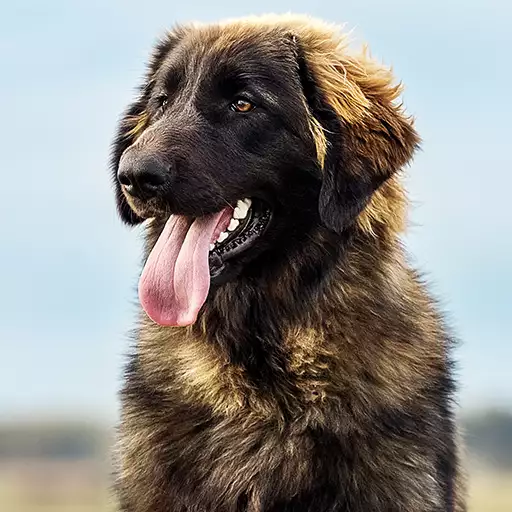
This is a relatively recent breed with origins in 19th century Leonberg, Germany where it was bred as a companion dog. They are famous for the thick mane that males of the breed develop at maturity.
#4: Neapolitan Mastiff – (7-9 years)
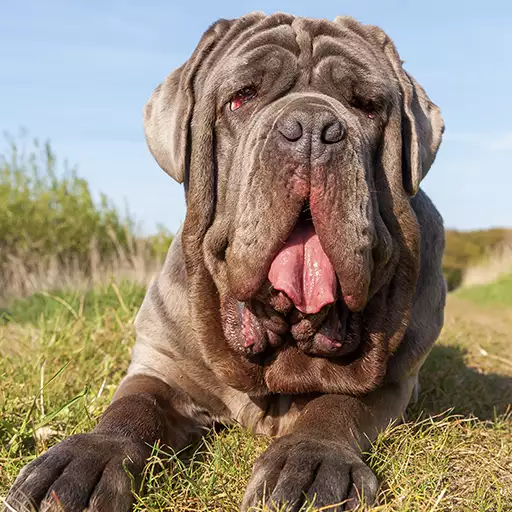
Males of this breed grow to 150+ pounds and have massive heads, making this one of the most intimidating breeds around. Although they can be aloof to strangers, this is an extremely loyal breed for those lucky enough to call him family.
#5: Great Dane – (7-10 years)
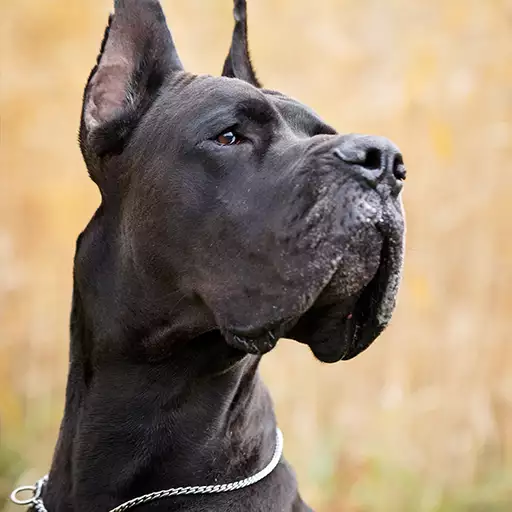
Contrary to popular belief, this favorite among the giant breeds actually has its roots in Germany, not Denmark. They were originally bread for hunting large and ferocious wild boars. They have a gentle temperament and are usually good with children.
#6: Bernese Mountain Dog – (7-10 years)
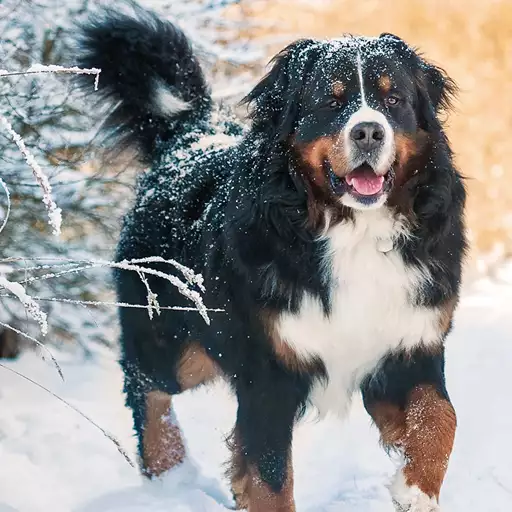
The vast dairy land of Switzerland is the home of this old breed. They were used to drive and guard cattle dating back centuries. They thrive in cool climates, becoming very playful in the snow.
#7: St. Bernard – (8-10 years)
This large breed can be found topping the scale at over 200 lbs. Although famous for images depicting this breed carrying flasks of brandy to people trapped in the snowy mountain passages of the Alps, it seems this mythology has been debunked. However, the breed is quite old and was developed in Alpine regions where they were used as rescue dogs (as well as herding and guard dogs.
#8: Scottish Deerhound – (8-11 years)
Among the tallest of breeds, this giant can reach 32+ inches at the whithers. Although not much of a looker, this breed is quite fast, as you might expect from the Greyhound like shape of the body. They were likely used to hunt deer in packs in the region that would only later become Scotland.
#9: Newfoundland – (9-10 years)
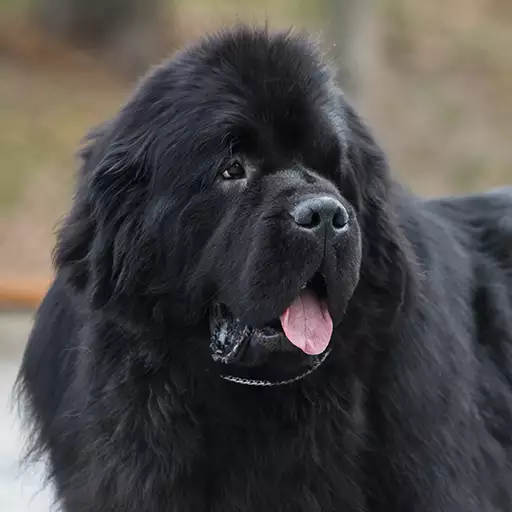
The patient and gentle nature of Newfies is in stark contrast to their bear-like looks. They are smart, easy to train and generally friendly. However, they do need moderate exercise to stay in shape.
#10: Rottweiler – (9-10 years)
This large guarding dog needs plenty of strong leadership, reinforcement based training, and early socialization to thrive. They make loyal and loving protectors to those that have the kind of training experience needed to help guide this breed to become confident and biddable.
What Can I Do to Prolong My Dog’s Life?
Although breed and size both influence longevity, good health depends on several factors including weight control, regular vet care, proper exercise and other factors.
The research on canine lifespan indicates several areas where pet owners can take action to give their dog the best chances for a long and happy life.
Here is what to focus on:
Get your dog spayed/neutered
The lifespan differences between spayed or neutered dogs and their unaltered counterparts is fairly astonishing. Females have average of 23% longer lives and males gain 18% in lifespan when altered.
Why does spay/neuter have such a large effect?
There are several factors that contribute to this longer lifespan for altered dogs.
One is the decrease in risk factors for certain diseases such as prostate disease and testicular cancer in males and uterus infection and breast cancer for females.
Another likely contributor is that unaltered dogs tend to engage in more risky behaviors such as roaming and fighting—both of which contribute to the chances of a traumatic or even fatal injury.
In fact, unneutered dogs are twice as likely to be hit by a car or get in a fight with another animal.
Keep Your Dog’s Weight in Check
According to the Association for Pet Obesity Prevention (APOP), 56% of dogs in America are overweight or obese, which is on the rise from previous years.
Obesity in our dogs is a serious problem. Obese dogs are at a higher risk for a variety of diseases and conditions that can both lower quality of life and longevity, including:
- Cancers of all types
- Hypertension and heart disease
- Urinary bladder stones
- Complications from anesthesia
- Degeneration of joints and arthritic pain
The best ways to help your dog maintain a healthy weight is to follow the feeding instructions given on quality dog foods, and make sure they get adequate daily exercise.
Make sure to keep treats to a minimum and avoid feeding high fat and calorie people foods to your dog.
Take a look at your dog. You should be able to see an actual waistline as you move down her body from her ribcage to her hind quarters.
Feel her ribs. If you can’t find them, you have a problem. You should be able to easily feel the ribs, but not see them to help find that target healthy weight for your pooch.
Remember, your dog relies on you to make sure she has a happy, healthy, and long life.
Schedule Regular Visits with a Veterinarian
In addition to making sure your pet stays up to date on vaccinations, regular vet visits help to keep a record of your dog’s health.
This can help diagnose problems down the road, as well as give your vet the history they need to spot important changes that could signal serious health concerns.
In many cases, getting an early diagnosis of a problem will offer the best and most successful treatment options. Regular vet checks can help prolong your dog’s life.
Proper Dental Care is Important for Dogs Too!
Many people are not aware of the importance of dental care for dogs. It goes well beyond bad breath!
In fact, proper oral care may even help your dog live longer.
According to the American Veterinary Medical Foundation, (AVMF), periodontal disease is common in canines 3 years and older.
If left untreated, it can lead to other very serious health problems including kidney and liver problems as well as heart disease.
In addition, sore gums and mouth infections can be painful quality of life issues that you don’t want your canine to have to suffer through.
Who is the Oldest Dog Ever?
Although many dog owners have made the claim, the verified official title goes to Bluey, an Australian Cattle Dog who lived in Victoria, Australia.
His verified records date his life from 1910 to 1939, making him 29 years and five months old when he died. Bluey currently holds the Guinness Book record for the world’s oldest dog.
Bluey may actually have been surpassed in age, ironically, by another Australian Cattle Dog that also lived in Victoria.
Her name was Maggie, and although there are no official documents to support his claims, her owner insists she lived to 30 years of age!
Who is the Oldest Living Dog?
We can’t be sure about this one and would love help from our readers to settle the question:
We found the following video that suggests the oldest living dog may be Tara, a (now?) 27-year-old rescued dog owned by Burt Ward (who played batman in the 1960’s TV show).
Unfortunately, the Guinness Book of World Records doesn’t seem to be keeping active track of the oldest living dog.
If you know of a more reliable source for the oldest living dog, please let us know in the comments below!











